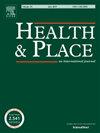A multi-constraint Monte Carlo Simulation approach to downscaling cancer data
IF 3.8
2区 医学
Q1 PUBLIC, ENVIRONMENTAL & OCCUPATIONAL HEALTH
引用次数: 0
Abstract
This study employs an innovative multi-constraint Monte Carlo simulation method to estimate suppressed county-level cancer counts for population subgroups and extend the downscaling from county to ZIP Code Tabulation Areas (ZCTA) in the U.S. Given the known cancer counts at a higher geographic level and larger demographic groups at the same geographic level as constraints, this method uses the population structure as probability in the Monte Carlo simulation process to estimate suppressed data entries. It not only ensures consistency across various data levels but also accounts for demographic structure that drives varying cancer risks. The 2016–2020 cancer incidence data from the Utah Cancer Registry is used to validate our approach. The method yields results with high precision and consistency across the full urban-rural continuum, and significantly outperforms several machine-learning models such as Random Forest and Extreme Gradient Boosting.
一种多约束蒙特卡罗模拟方法降尺度癌症数据。
本研究采用了一种创新的多约束蒙特卡罗模拟方法来估计人口亚组的抑制县级癌症计数,并将缩小尺度从县扩展到美国的邮政编码制表区(ZCTA)。鉴于已知的癌症计数在更高的地理水平和相同地理水平的更大人口群体中作为约束,该方法利用蒙特卡罗模拟过程中的总体结构作为概率来估计被抑制的数据条目。它不仅确保了不同数据水平的一致性,而且还解释了导致不同癌症风险的人口结构。来自犹他州癌症登记处的2016-2020年癌症发病率数据用于验证我们的方法。该方法在整个城乡连续体中产生高精度和一致性的结果,并且显著优于随机森林和极端梯度增强等几种机器学习模型。
本文章由计算机程序翻译,如有差异,请以英文原文为准。
求助全文
约1分钟内获得全文
求助全文
来源期刊

Health & Place
PUBLIC, ENVIRONMENTAL & OCCUPATIONAL HEALTH-
CiteScore
7.70
自引率
6.20%
发文量
176
审稿时长
29 days
期刊介绍:
he journal is an interdisciplinary journal dedicated to the study of all aspects of health and health care in which place or location matters.
 求助内容:
求助内容: 应助结果提醒方式:
应助结果提醒方式:


